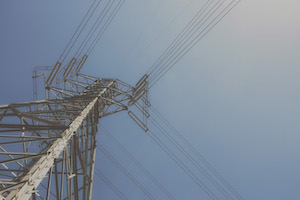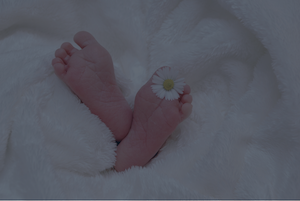The moon’s constantly changing face
This week in Starwatch I want to go back to basics when it comes to the moon. So why does the moon change shape? Why is it a crescent on one night, a half-moon another night, and a full moon on yet another night? Why is it that on some Butler evenings we don’t see the moon at all? It all comes down to two things — the moon’s orbit around the Earth, and the sun’s light reflecting off the moon.
The moon generates no light of its own. It's all sunlight being reflected as the moon revolves around the Earth. The changing angle between the moon, the Earth and the background sun is responsible for the shape, or phase, that we see. The best way to explain the moon’s phases is to look at the different positions in its orbit.
This is when the moon lies roughly in a line between the Earth and the sun, and the sunlit side of the moon faces completely away from Earth. The moon is invisible to us, and its position in the sky is close to the position of the sun, rising at sunrise and setting at sunset.
Every once in a while, the moon will lie exactly in a line between Earth and the sun, and we have a solar eclipse. That doesn’t happen every new moon because the moon’s orbit around the Earth is inclined by 5 degrees with respect to Earth’s orbit around the sun. The new moon has to be at the right place at the right time.
A few days after the new moon, the angle between the moon, Earth and sun opens up a bit, and we Earthlings begin to see a little sliver, or crescent, of the sunlit part of the moon. It rises shortly after sunrise and sets shortly after sunset, and we can see it for a few hours after twilight in the western sky.
This is a great time to see a phenomenon called “Earthshine.” That’s when you not only see the crescent shape of the moon but you can also see the rest of the moon’s disk faintly bathed in secondhand sunlight bouncing off our Earth and onto the lunar surface. It’s a lovely spectacle!
A week into the phase cycle, we have a first quarter moon. It’s called “first quarter” because the moon is a quarter of the way through its cycle of phases. It doesn’t mean that you only see a quarter of the moon. You actually see a half-moon because half of the sunlit part of the moon faces Earth. The Earth, moon and sun are at a right angle to each other. The moon rises around midday and sets around midnight.
This is a wonderful time to start viewing our lunar neighbor with a telescope. Especially take a look along what’s known as “the terminator.” That’s the line between the darkened part of the moon and the sunlit part. Along the terminator the shadows are long, revealing features that are otherwise harder to see. You can even see the mountain peaks poking above the shadows on the dark side of the terminator.
Ten days after the new moon, the angle between the moon, sun and Earth opens up to more than a right angle, and we see more of the sunlit half of the moon. That’s when the growing moon takes on an oval football shape and begins to “kick” out a lot of light. The waxing gibbous moon rises in the middle of the afternoon and sets around 2 or 3 a.m.
Fourteen days after a new moon is a full moon. We’re now halfway through the moon’s 29-day cycle of phases. The moon is on the opposite side of the Earth from the sun, and from Earth we can see the complete sunlit half of the moon. The full moon rises at sunset and sets at sunrise, and while moon gazing is wonderful for love and romance, stargazing is toast!
Not only that, this isn’t really a good time to explore the moon either. Everything on the surface is in direct sunshine and there are no revealing shadows. Around the time of the full moon is when you see the classic “Man on the Moon” and other images like the poodle on the moon.
Sometimes the full moon gets into the reddish shadow of the Earth and we get to see a lunar eclipse. That happens once or twice a year on average.
Around 17 days after the new moon we see an oval-shaped moon again, but this one is the mirror image of the waxing gibbous. The angle between the moon, sun and Earth begins to close up. The waning gibbous moon rises after sunset and sets after sunrise. That’s when you see the moon in the western sky in the morning after the sun is already up.
Twenty-one days after the new moon, we have a last quarter moon. Once again the moon, sun and Earth are at a right angle. We see the opposite side of the moon than we saw at first quarter. The last quarter moon rises about midnight and sets around noon. Just like the waning gibbous moon, we see the last quarter moon in the western sky after sunrise.
About 24 days after its new phase, the moon is down to a crescent again as the angle between the sun, moon and Earth gets smaller and smaller. The waning crescent moon rises two to three hours before sunrise and sets in the early afternoon. It’s so close to the sun that it becomes invisible shortly after sunrise. Before sunrise though, you have another chance to see “Earthshine” or “secondhand sunshine.”
After 29.5 days, the moon is once again new, and the whole cycle of phases, called the synodic month, starts all over again. As the moon orbits the Earth not only does it change shapes, it also migrates eastward among the stars about 13 degrees every 24 hours. Because of that, the moon rises later and later each day.
Enjoy our lunar neighbor. It sports a new face every night … and day!
Mike Lynch is an amateur astronomer and professional broadcast meteorologist for WCCO Radio in Minneapolis/St. Paul. He is also the author of “Stars: a Month by Month Tour of the Constellations,” published by Adventure Publications and available at bookstores and at adventurepublications.net. Contact him at mikewlynch@comcast.net.












